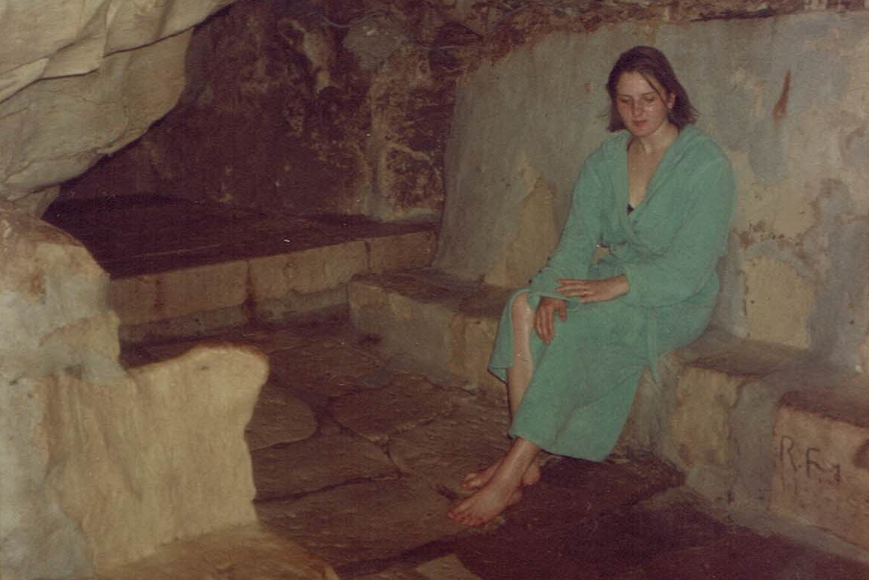A town on the south-western coast of Sicily, Sciacca, has developed a peculiar history in the use of thermo-mineral waters and vapour grottoes since high antiquity. Today, its geo-thermal area is still marked by two streams, the Carabollace on the eastern side and Carrozza on the western, which receive their thermal water from nearby springs. The Bath Valley, just outside Sciacca, also offers a good commercial opportunity as it is situated near the sea.
In the past, bathing did not necessarily imply the use of water, as can be seen from the use of the vapour grottoes of Mount Cronio (image above), 7 km from Sciacca, where taking a bath would consist of sitting inside a special grotto – named Daidalos – and waiting for abundant perspiration. This habit is well described by Diodorus Siculus, who states that Daidalos adapted a grotto from Selinunte’s territory into a thermal site where Minos died in the 13th century BCE.
Whether based on history or myth, such stories suggest the interest of ancient people. A few prehistoric jars from the final stage of the Neolithic age were found in 1957 in the deeper galleries of the karst complex, which had been studied by spelaeologists since 1942. That made it possible to date the geologic event that connected the karst galleries with the thermal basin underneath, thus causing the vapour flux to be driven outwards. In one of those jars (Fig. 1), traces of prehistoric wine were found.
Upper grottoes were abandoned until the 5th century BCE when the Greek settlers started to visit them for religious purposes. In one, a statue of Demeter and lamps in the local Antiquarium has been found. The religious attitude towards vapour coming out from the mountain had much to do with cults of the mother earth, both in prehistoric and classical times, and it is unlikely that upper cavities were used for proper therapy in those times, as vapour would scatter in the large grottoes that were restricted artificially only in the 5th century AD.
Why do we perspire? Normally, this is a natural mechanism which allows our body to lower temperature by the evaporation of the body secretions, but if the external conditions offer high humidity and temperatures, this evaporation does not take place and this is what happens in the grottoes of Sciacca, into which temperature reaches 37°C and 100% humidity. A tolerable sitting inside these grottoes should not be longer than 20 minutes, after which signs of heat stroke can appear (polipnea, bradichardia, fever, and asthenia).
Some people can perspire as much as 3 litres per hour in the grottoes of Sciacca, and the grottoe treatment should normally me made while fasting and with a chance of drinking soon afterwards.
Antrotherapy is recognized officially as a treatment by the National Health Service in Italy (NAIADE survey) which allows one cycle of treatment per year, especially for pathologies such as chronic rheumatism. Grottoe treatments are indicated in the bronchial asthma and in the chronic bronchitis. Fibromyalgia is greatly indicated among extra articular rheumatisms. Contraindications to this treatments are severe lung and heart conditions because of blood pressure involvement, as well pregnancy, coronary insufficiency and psychological conditions.
In the past, the physicians would recommend taking a laxative before entering the vapour grottoes. It is also recommended not to drink cold drinks, but to have a herb infusion after the therapeutic sitting.
Today the use of sauna in artificial settings is a widening practice in the wellness and fitness centres.


